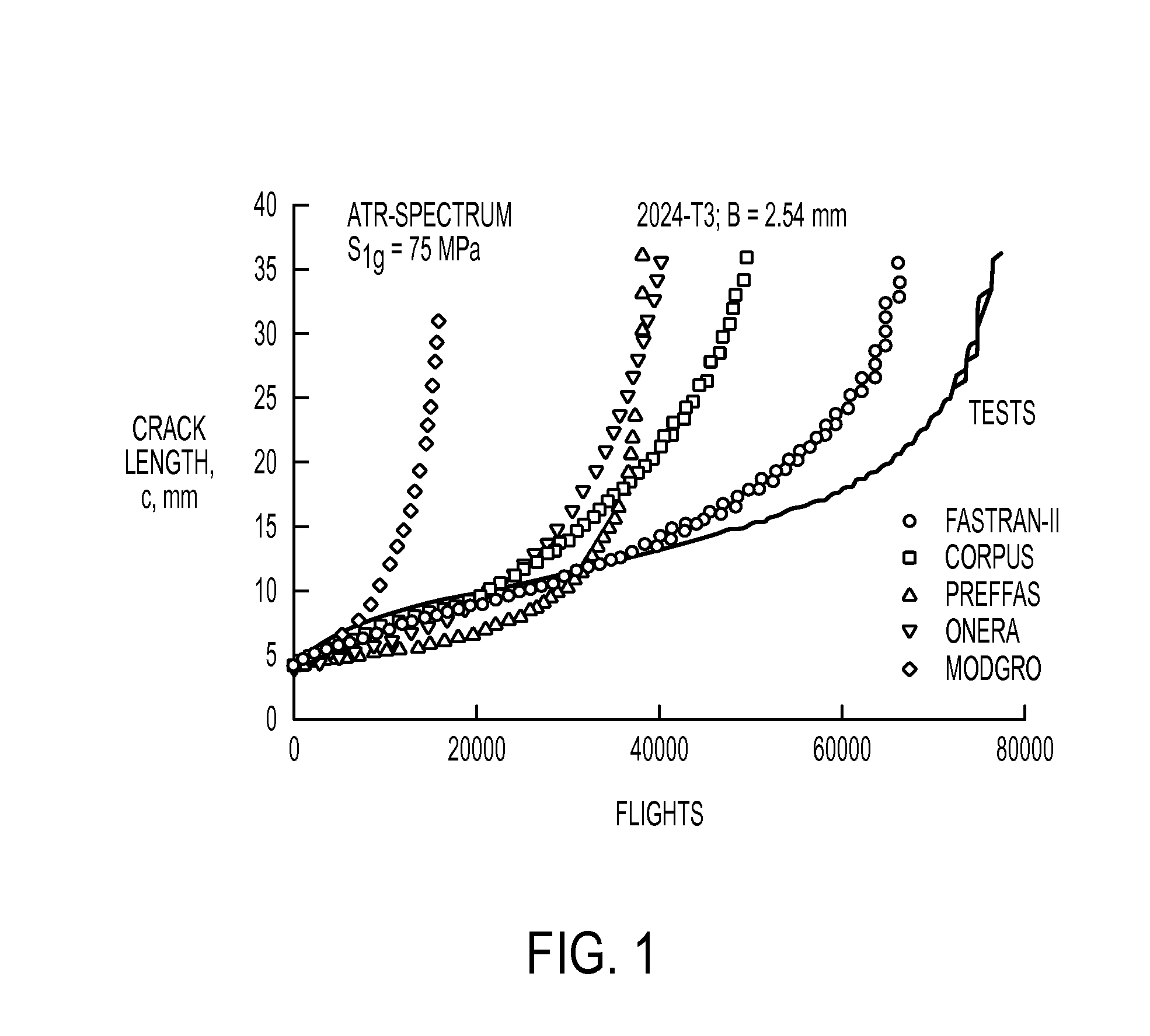System and method for predicting material fatigue and damage
a technology of fatigue and damage, applied in the direction of material analysis using wave/particle radiation, instruments, transportation and packaging, etc., can solve the problems of various defects, and failure to meet the requirements of the manufacturing process
- Summary
- Abstract
- Description
- Claims
- Application Information
AI Technical Summary
Benefits of technology
Problems solved by technology
Method used
Image
Examples
Embodiment Construction
[0039]The invention is directed to a system and method for predicting component damage. In order to create a more reliable life prediction model for components, the basic physics of the problem are analyzed and a better approach is formulated in order to treat the overall damage as an intrinsic behavior of the material. This is accomplished by recognizing that: (1) the true material behavior is represented by the long crack growth properties, (2) fatigue damage must be described by two parameters, ΔKappl and Kmax,total instead of merely one (i.e. ΔK), and (3) the deviations from the long crack growth behavior arise from the internal stresses present ahead of the crack tip which contribute predominantly to Kmax. These internal stresses are either present in the material or generated ahead of the crack tip during overloads and underloads. The internal stresses can be tensile or compressive and are responsible for an accelerated growth in the short crack region, and decelerated growth ...
PUM
| Property | Measurement | Unit |
|---|---|---|
| crack length | aaaaa | aaaaa |
| grain size | aaaaa | aaaaa |
| crack growth rate da/dN | aaaaa | aaaaa |
Abstract
Description
Claims
Application Information
 Login to View More
Login to View More - R&D
- Intellectual Property
- Life Sciences
- Materials
- Tech Scout
- Unparalleled Data Quality
- Higher Quality Content
- 60% Fewer Hallucinations
Browse by: Latest US Patents, China's latest patents, Technical Efficacy Thesaurus, Application Domain, Technology Topic, Popular Technical Reports.
© 2025 PatSnap. All rights reserved.Legal|Privacy policy|Modern Slavery Act Transparency Statement|Sitemap|About US| Contact US: help@patsnap.com



